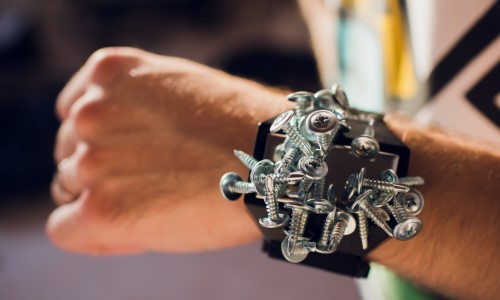
7.21.20 – SSI – Tech expert Bob Dolph drills down on alarm contacts as well as other magnet-related applications that can improve integrators’ lives.
As far as the security industry goes, magnetic door and window sensors (also referred to as alarm contacts) are as old as time itself. These are the most widely used types of alarm sensor in the industry. Since these sensors are so simple and often work quite well we have a tendency to take these applications for granted.
I thought this month it would be interesting to drill down a little on these sensors along with other magnet-related applications that can improve our lives.
I can remember early on alarm contacts were open to the elements and could often be environmentally compromised causing intermittent operation and false alarms.
A big breakthrough came with the implementation of hermetically sealed magnetized reed switches that are still popular today. I would like to take a moment and point out some cautions when applying magnetic alarm contacts.
Understanding the science of how an alarm contact’s reed switch responds to a particular application is important. Certain, often subtle performance characteristics can make a big difference in a reliable alarm operation.
In my August 2003 Tech Talk article, “Alarm Sensors Get No Respect,” I point out a physical magnetism characteristic called hysteresis. This is when the “make” distance (bringing the sensor and magnet together for activation) is shorter than the “break” distance (moving the sensor and magnet apart once activated).
It is advisable for reliable performance to test alarm contact performance at 50% their specified or open air make distance. This should often exceed overall reliable performance expectations.
Industry testing has shown that mounting alarm contacts on or in metal frames can reduce their performance make distance as much as 50%.
This can be improved by using plastic spacers on surface contacts or specially isolated contacts for metal frame recessed contact installs. It is a common false belief that the metal will drain the potency of a magnet. It will however, as we have seen, negatively influence their performance.
One may also consider the use of specially designed wide-gap and larger magnets when faced with marginal distance performance. Special wide gap alarm contacts often have an embedded miniature booster magnet in them to help increase performance.
Magnets can also help us with installation tasks. Highly respected power supply manufacturer Altronix now provides the MM4, magnetic circuit board mounting standoffs for easy and modifiable board placement in its metal boxes.
Another company, MagDaddy, is known for its versatility with magnets. Its popular lines include magnetic holders for J-hooks, bridle rings, cable holders and tie mounts. These magnetic devices can save considerable installation time.
Through the years installations have become easier with the use of magnets. Early on Labor Saving Devices introduced the Wet Noodle. It is basically a small flexible shaft with a magnet on the end. This device along with its accompanying steel chain can help installers when fishing for cable in a wall.
Another recent popular magnetic cable wall fishing tool is the Magnepull. This is a beefier version of the Wet Noodle. Its powerful magnetic roller will literally drag a cable through a wall, heavy insulation and all.
A magnetic installation tool that has been a favorite of mine for decades is the simple use of magnetic tape. I started using this by placing this special tape on the back of my digital multimeter, allowing me to place my meter on the equipment box and giving myself an extra hand when testing equipment.
Using such magnetic installation assist devices as wrist bands have always been popular. You may want to check out the Bold Magnetic Work Gear line at MagnoGrip for some creative timesaving ideas.
Another good resource for magnetic assist items is Master Magnetics. Some items include small but handy magnet pickup tools. Great for the time you accidentally drop that very important screw behind heavy equipment. Every tool kit should also have magnetizer/demagnetizers for small tools.
Using magnets to help keep you better organized is also a great accomplishment. Magnetic bars are very handy for taking those hand tools in your workshop and truck and finding a handy but safe central location. Trying to keep your van more organized? I especially like the Van Magnets from Rack-A-Tier. Add some carabiners and you have some great extra van storage devices.

Tool of the Month
I recently ran across this interesting magnetic-related installation tool. It is called the Dirt Bag and is from the creative people at Rack-A-Tiers Manufacturing. Stray metal chips from drilling in metal cabinets can cause serious damage to electronic components.
This specially designed bag attaches magnetically over the hole being drilled and holds loose shavings in the magnetic bottom of the bag.
About the Author

BOB DOLPH, SSI Contributor
Contact:
Bob is currently a Security Sales & Integration “Tech Talk” columnist and a contributing technical writer. Bob installed his first DIY home intercom system at the age of 13, and formally started his technology career as a Navy communication electronics technician during the Vietnam War. He then attended the Milwaukee School of Engineering and went on to complete a Security Management program at Milwaukee Area Technical College. Since 1976, Bob has served in a variety of technical, training and project management positions with organizations such ADT, Rollins, National Guardian, Lockheed Martin, American Alarm Supply, Sonitrol and Ingersoll Rand. Early in his career, Bob started and operated his own alarm dealership. He has also served as treasurer of the Wisconsin Burglar and Fire Alarm Association and on Security Industry Association (SIA) standards committees. Bob also provides media and training consulting to the security industry.
